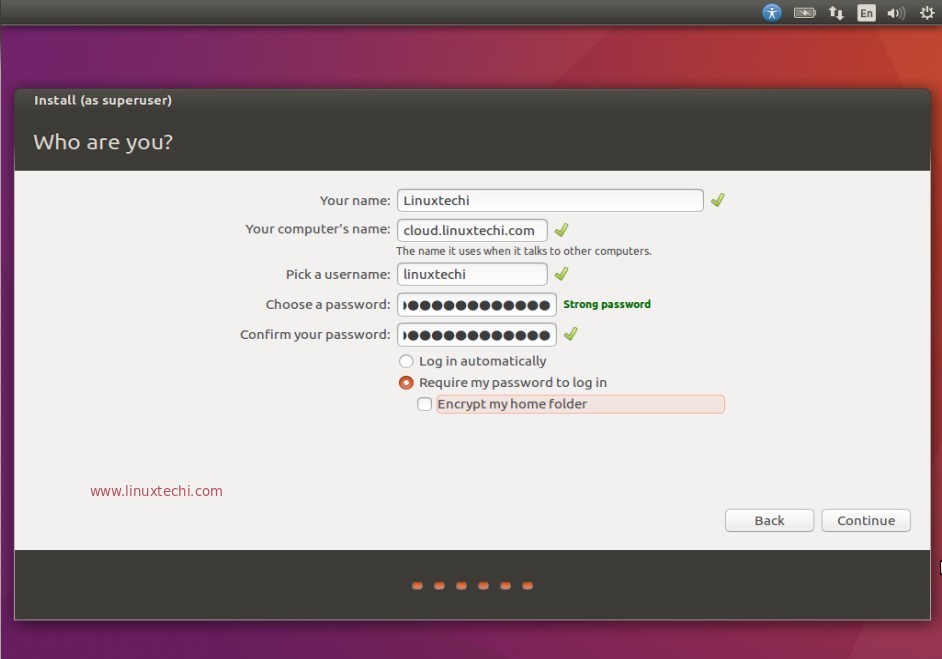

- Awstats install ubuntu 16.04 digitalocean password#
- Awstats install ubuntu 16.04 digitalocean download#
- Awstats install ubuntu 16.04 digitalocean free#

Configuring Virtualmin to enable NginxĪlthough Virtualmin is successfully installed and Apache2 web server has been stopped, Virtualmin is still configured use to Apache2. You’ll be good with default selections for all other steps.
Awstats install ubuntu 16.04 digitalocean password#
It is pretty self-explanatory, just remember to select MySQL as database server and Only store hashed passwords as password storing method. Īfter successful login, you’ll be taken to the Virtualmin Post-Installation Wizard. Your DNS should be propagated for this to work. Make sure you replace with your domain name. You can access Virtualmin on following URL with your root password. So lets install the lot, apt-get install memcached mcrypt php5-memcache php5-mysqlnd php5-xmlrpc php5-curl php5-gd php5-cli php-pear php5-dev php5-imap php5-mcryptĪnd enable the php5-mcrypt module, php5enmod mcrypt Virtualmin Post-Installation Wizard You’ll need some PHP 5 modules installed on your server to host php applications error free. Now it’s safe to install Nginx, apt-get install nginxįollowing command will add two plugins to Virtualmin that enable Nginx support, apt-get install webmin-virtualmin-nginx webmin-virtualmin-nginx-ssl Installing PHP 5 modules Since we’re going to use Nginx, we should stop Apache2. The script will install Apache2 as http server by default.

Installation process will take few minutes to complete. Run the script you just downloaded with, sh /root/install.sh
Awstats install ubuntu 16.04 digitalocean download#
Installing VirtualminĪssuming you have a proper hostname setup for your server, let’s download Virtualmin install script, wget In order to complete this guide, you will need: An Ubuntu 16. you can do it by following ‘ Change Ubuntu 14.04 Hostname from Command-line‘ tutorial. Let’s Encrypt provides an easy way to obtain and install trusted certificates for free. If it’s something other than your domain or a sub-domain, you should fix it before going any further. That should output your current hostname. You can check your current hostname by running following command. Your server’s hostname should be a fully qualified domain name (Such as or ) for Virtualmin to work. So let’s start by removing some packages that might have already installed on the server with OS. If you want to save all the trouble going through this tutorial, you can hire me to do it for you. Otherwise Virtualmin installation will fail. And also, it’s important that your VPS operating system is Ubuntu 14.04 圆4 bit. This tutorial is only intended for fresh servers. Do not try this on a server that is already setup. If not, you can get one from best unmanaged VPS providers. I’ve tested Prosper202 on this setup and found it working without errors.īefore we start, I’m going to assume that you have an unmanaged VPS with root access ready to go.

This configuration will create the platform to host websites based on WordPress and alike. In this post, I’m going to walk you through the steps of configuring an unmanaged VPS with Virtualmin and Nginx. Although it doesn’t support Nginx out of the box, it can be enabled with little configuration and a plugin. You can follow my Ubuntu 16.04 LEMP stack tutorial to set it up on your server Ubuntu 16.04 LTS comes with Nginx 1.10, PHP 7 and MariaDB 10. # cp /usr/share/GeoIP/GeoLiteCity.dat /usr/share/GeoIP/GeoIPCity.Ubuntu 16.04 LTS is now available and setting up Virtualmin on it offers more security and performance improvements. Make sure you have all files in folder /usr/share/GeoIP/GeoLiteCity.dat else copy LoadPlugin=”geoip_city_maxmind GEOIP_STANDARD /usr/share/GeoIP/GeoLiteCity.dat”Įrror opening /usr/share/GeoIP/GeoIPCity.dat at /usr/local/share/perl/5.14.2/Geo/IP/PurePerl.pm line LoadPlugin=”geoip GEOIP_STANDARD /usr/share/GeoIP/GeoIP.dat” # cp GeoLiteCity.dat /usr/share/GeoIP/GeoLiteCity.datĮnable AWSTAT configuation for LoadPlugin > install Geo::IP Geo::IPfree Geo::IP::PurePerl URI::Escape Net::IP Net::DNS Net::XWhois Time::HiRes Time::Local configure –prefix=/usr/local/zlib & make & make install # apt-get install build-essential zlib1g-dev apg libgeo-ipfree-perl libnet-ip-perl libnet-dns-perl liburi-perl apache2-utils # vi /etc/logrotate.d/apache2 (Replace create 640 root adm with create 644 root adm) */10 * * * * /usr/share/awstats/tools/update.shġ0 03 * * * /usr/share/awstats/tools/buildstatic.sh Generate stats for AWStats for /var/log/apache2/access.log file (Make sure you have fresh log file) # vi /etc/awstats/Ĭheck you have below settings in /etc/awstats/ There are many log analyzer but AWStats is open source Web analytics reporting tool, It can analyze log files from Apache, WebStar, IIS.Ĭonfiguring for replace with your real domain
Awstats install ubuntu 16.04 digitalocean free#
AWStats is a free analytic tool that generates web, streaming, ftp or mail server statistics, graphically.


 0 kommentar(er)
0 kommentar(er)
